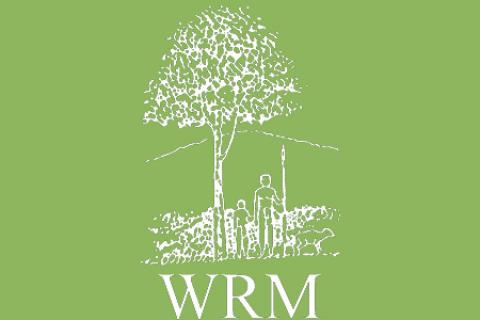In the Banten region of western Java, Indonesia, exists a small-scale indigenous community that has to a large extent been able to avoid the advancement of globalization, modern technology and other influences of the outside world, including environmental degradation. The Baduy people are a reclusive tribal group that has lived a relatively undisturbed, traditional lifestyle in a closed society for more than 400 years until the recent encroachment of economic and social pressures from the outside world.
Bulletin articles
When the first ‘conquistadores’ travelled down the Amazon in the 16th century, they found populous settlements, hierarchical chiefdoms and complex agricultural systems all along the main river. The ‘Indians’, they reported, raised turtles in ponded freshwater lagoons, had vast stores of dried fish, made sophisticated glazed pottery, and had huge jars, each one capable of holding a hundred gallons. They also noted these peoples had flotillas of canoes and traded up into the Andes and down to the mouth of the great river.
The Forest Stewardship Council (FSC) was founded in 1993, with the mission of promoting "environmentally appropriate, socially beneficial and economically viable management of the world’s forests. FSC forest management standards are based on FSC's 10 Principles and Criteria of responsible forest management."
Unfortunately, the FSC decided to also include tree plantations within its scope and this has resulted in widespread criticism, particularly in the South, where many local communities and NGOs are opposing the spread of large-scale tree plantations.
A project to build a hydroelectric dam on the River Lom, a few kilometres downstream of its confluence with River Pangar, presented 13 years ago and suspended in 1999, has been resumed in October last year. The Cameroonian government decided to go ahead with the plans of the Lom-Pangar hydroelectric project, which includes a 50 meter high barrage flooding an area of 610 sq.km and a hydroelectric plant of approximately 50 MW. The first step in the process is a new environmental impact study.
National Parks are not playing a key role in the economic development of Central African countries. However, they are seen as the cornerstone of the world’s conservation efforts. Thus the president of Gabon, El Hadj Omar Bongo Odimba, announced the creation of thirteen National Parks at the Earth Summit, held in Johannesburg, South Africa, in 2002.
The forest of Sakoantovo in southern Madagascar is sacred for the people that inhabit it. In general, a sacred forest is a place that is venerated and reserved for the cultural expression of a community, and its access and management are governed by traditional powers. Sacred forests cover a total area of 60,000 hectares in the Spiny Forest ecoregion of Madagascar, one of the biologically richest drylands on earth.
Even though Nigeria’s forests are only some ten percent of the size they were just two decades ago, they still provide an incredibly rich and diverse habitat. From the tropical highlands to the lowland rainforest, from the plateau grasslands to the savanna, from the swamps to the mangrove forests.
The Sundarban, covering some 10,000 square kilometres of land and water, is the largest contiguous block of coastal mangrove forests in the world and is part of the world’s largest delta formed from sediments deposited by the three great rivers —the Ganges, Brahmaputra and Meghna— which converge on the Bengal Basin.
The UNESCO had declared a portion of the Bangladesh Sundarban as World Heritage site in 1997, and the U.N. Development Programme (UNDP) has funded projects to save it from degradation.
Indonesian Law No. 14/1999 bans open-pit mining activities in protected forests and prompts several mining companies to suspend their operations. In July, the Indonesian Parliament endorsed a Presidential decree to amend this law (Perpu No. 1/2004), which stipulates that all mining contracts signed before Law No. 41/1999 on forestry came into effect are valid for the remainder of their terms. The decree provides political justification for 13 mining companies to operate in protected forests. This is the point of entry for a process of destruction in the days to come.
Representatives of the Murut, the Kadazandusun, and the Rungus, and some 30 more tribes coming from the remote region of Tongod, traversed in July of this year northern Borneo to reach the gleaming office of Sabah’s Deputy Chief Minister of Land, Datuk Lajim Haji Ukin at the capital city of Kota Kinabalu.
The group was there to demand the government to abide by its own laws, recognize native rights to protect and manage their natural resources, and halt reallocation of lands to logging and plantation corporations.
Ms. Mai of the Palaung ethnic community and mother of three children in Pang Daeng village of north Thailand has been camped in front of Chiang Mai City Hall for the past few weeks. Along with about hundred members of her community, she came to petition the Chiang Mai governor for the release of her husband Mr. Tan Bortuk and others.
The Yaboti forest, 300 km to the east of Posadas in the Province of Misiones, was designated as a Biosphere Reserve by UNESCO in 1995. In addition to its importance for biodiversity, it is the only refuge and means of subsistence of two communities of the Mbya Guarani ethnic group (Tekoa Yma and Tekoa Kapi’I Yvate), peoples who only recently got in touch with the outside world and who are now threatened by the interests of the Mocona Forestal S.A. company.
